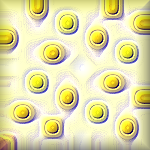Three real numbers a, b, c with a < b < c, are said to be in arithmetic progression if c - b = b - a.
Define a sequence u(n), n = 0, 1, 2, 3, ... as follows: u(0) = 0, u(1) = 1 and, for each n > 0, u(n+1) is the smallest positive integer such that u(n+1) > u(n) and {u(0), u(1),... u(n), u(n+1)} contains no three elements that are in arithmetic progression.
Find u(100).
[Irish MO, Paper 1, Question 5, 1999]











